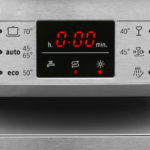Modern washing machines have become a staple in households worldwide, making laundry chores more efficient and convenient. However, like any complex appliance, washing machines are not immune to malfunctions and errors.
When something goes wrong during the washing process, the machine often displays an error code to help users identify the issue.
Understanding these error codes can save time, money, and frustration by enabling you to troubleshoot and fix the problem yourself or communicate the issue effectively to a technician.
This comprehensive guide explores common washing machine error codes, their meanings, and steps to resolve them, ensuring smooth and trouble-free laundry days.
What Is a Washing Machine Error Code?
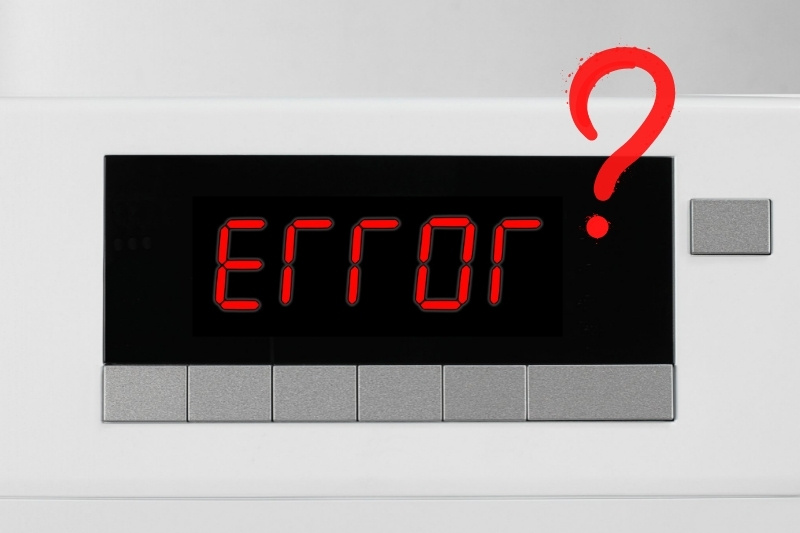
Washing machine error codes are crucial in diagnosing and resolving issues with these essential household appliances.
When an error occurs within the washer, internal sensors detect irregularities and generate specific codes, representing the nature of the problem.
These codes allow users and technicians to quickly identify the underlying issue without disassembling the appliance.
The error codes on your appliance might differ depending on the brand. Many leading brands including Hotpoint, Siemens and Whirlpool use an E or F (which stands for “error” or “fault,” respectively) followed by a number or letter. The end number or letter highlights a particular issue with the machine.
However, some washing machine brands like Samsung have more advanced and complex washing machine error code labelling, which includes the E/F numbered system and other codes comprised of different numbers and letters.
What Do the Error Codes on My Washing Machine Mean?
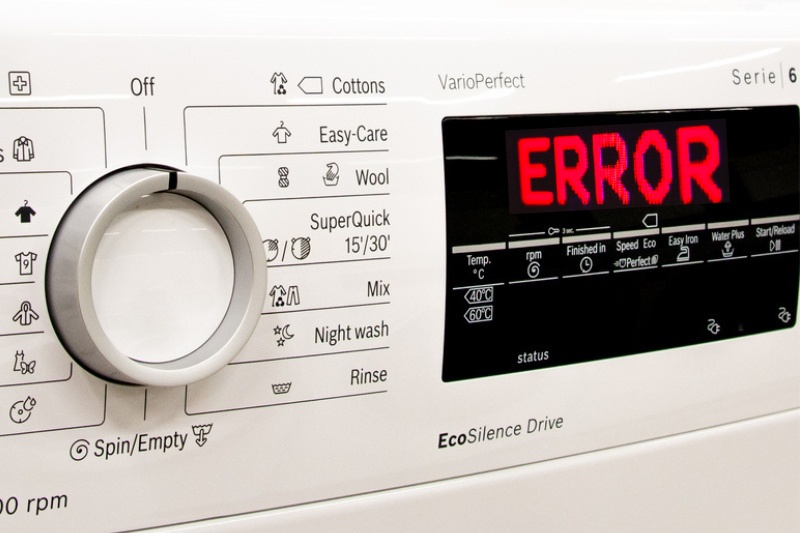
Understanding the meaning behind these codes empowers you to troubleshoot problems effectively, thus avoiding unnecessary downtime and expenses.
This might entail adjusting your washer’s settings, performing basic maintenance, or seeking professional assistance.
As all washing machine models use different error coding systems, we recommend referring to the instruction manual or the manufacturer’s website to understand the fault in your appliance properly.
However, the meaning and troubleshooting help for the most commonly used error codes for popular UK brands are explained below.
Please note: Some appliances use the same code numbering system (e.g. E1, E2, etc.) but assign different errors to each code. Consult your instruction manual if the below meanings do not seem to correlate with the issue at hand.
Error code E1 or E02: Water supply issue
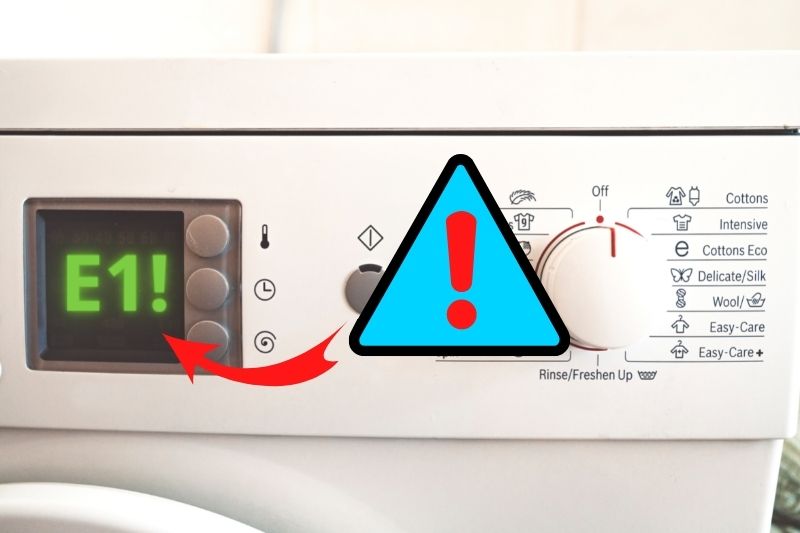
- Meaning: This error code indicates a problem with the water supply to your washing machine. There are many causes of water supply issues, such as a clogged or kinked water inlet hose, a malfunctioning water inlet valve, or insufficient water pressure.
- Troubleshooting: Start by checking the water inlet hose for any obstructions or damage. Also, ensure that the water supply is turned on and provides adequate pressure. If the problem persists, the water inlet valve may need to be replaced with a new one.
Error code E2, E03 or F05: Drainage problem
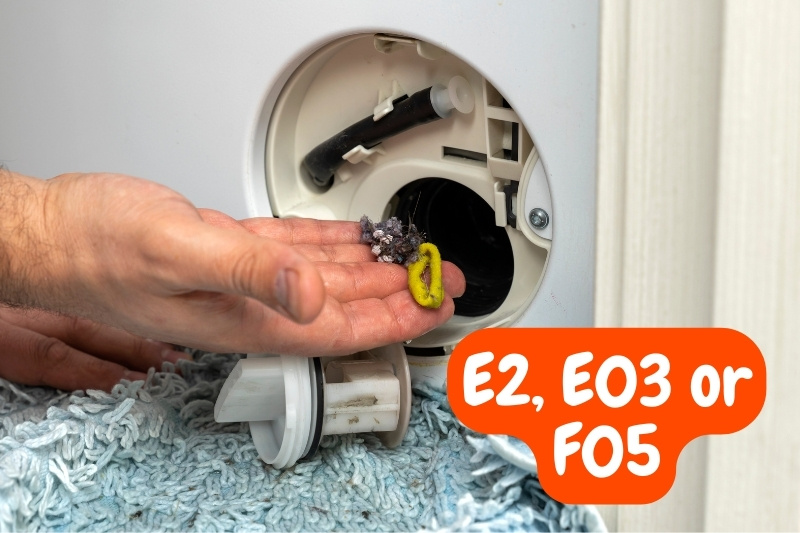
- Meaning: This code signals an issue with the drainage system. When this error code is shown, waste water cannot be drained from the drum and your machine usually beeps. It may result from a clogged drain filter, a blocked drain hose, or a faulty drain pump.
- Troubleshooting: Clean the drain filter and remove any debris from the drain hose that could be clogging the drainage pipe. Also, check the drain pump for obstructions or signs of damage. If the pump is faulty, consider replacing it.
Error code E3 : Overflow error

- Meaning: This error occurs when the washing machine is overloaded with laundry detergent or powder, exceeding the capacity.
- Troubleshooting: Start by turning off the power to your washing machine and waiting for a minute. Switch the power back on, and the drain pump should drain all water and excess detergent from the machine.
Error code E4 or E06: Unbalanced load
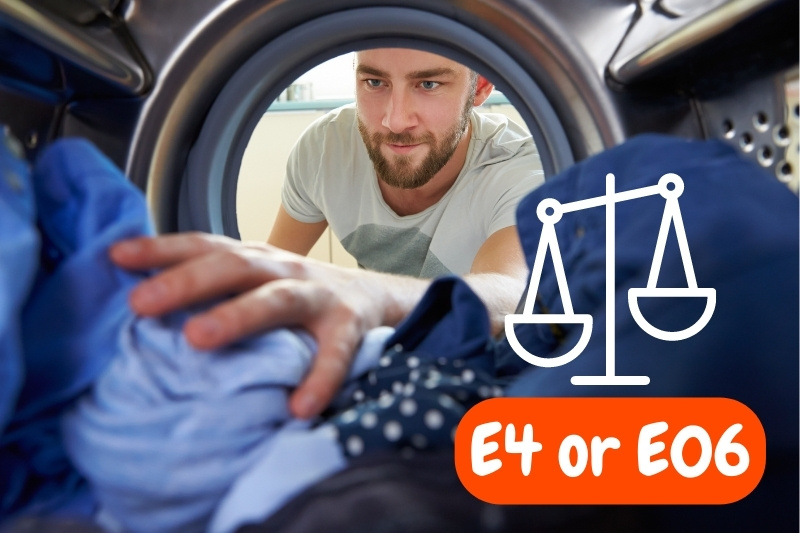
- Meaning: This error code indicates the washing machine detects an unbalanced load, which can cause excessive vibrations and banging noises during the spin cycle. When this happens, your washing machines will stop spinning for safety reasons.
- Troubleshooting: Pause the machine, redistribute the laundry evenly, and resume the cycle. If the error persists, the load may still be unbalanced (try adding 1-2 extra towels into the drum if washing singular, heavy items), or the suspension system may need adjustment or repair. You should also check that your washing machine is on a flat, stable surface.
Error code F06 or E01: Door lock issue
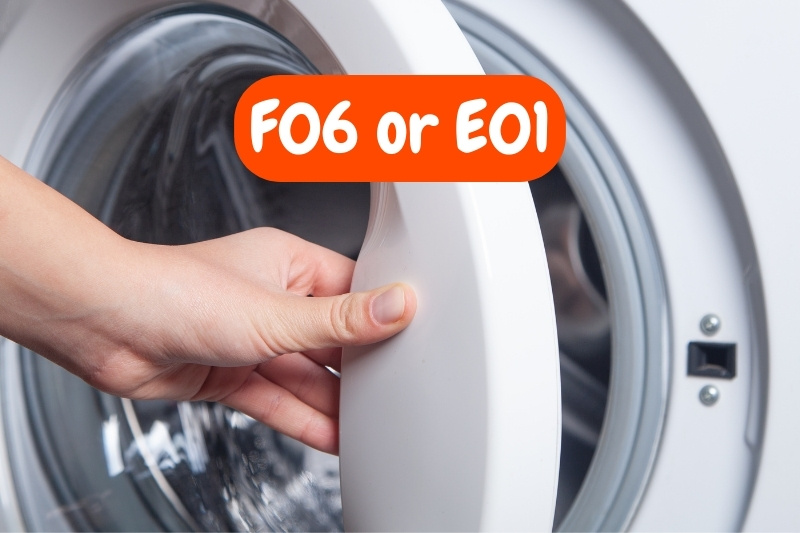
- Meaning: The door lock mechanism is not functioning correctly, preventing the door from securely locking during the wash cycle. Your washer will not turn on until the door can be locked shut securely.
- Troubleshooting: Check for any obstructions around the door seal and remove them. You should also clean the washing machine seal. If the problem persists, the door lock or wiring might be faulty and require professional replacement.
Error code E7 or E04: Water level error
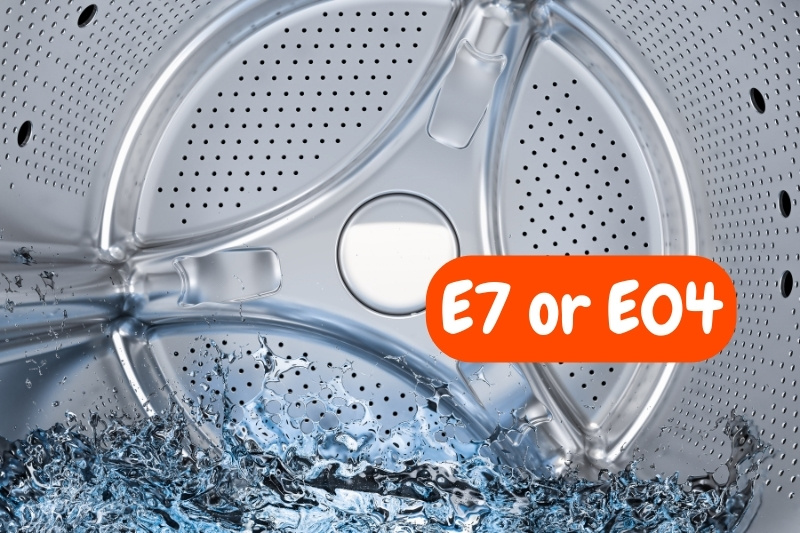
- Meaning: The washing machine’s water level sensor is not working correctly, leading to water filling or draining issues.
- Troubleshooting: You can try switching the power to your washing machine off and on again to see if it resets itself. If you’re still experiencing issues, check the water level sensor and its connections. Clean or replace the sensor if necessary.
Error code EA/B, E07 or F02: Motor malfunction

- Meaning: The motor or its components are experiencing issues, such as an electrical fault or mechanical problem. This issue is usually intermittent, and you’ll notice that the washing machine drum doesn’t rotate during the wash cycle.
- Troubleshooting: Turn off the machine and unplug it from the power source. Wait for a few minutes and restart the machine. If the error persists, contact a professional technician for further inspection and repair.
Error code EC, E05 or F03: Temperature sensor problem
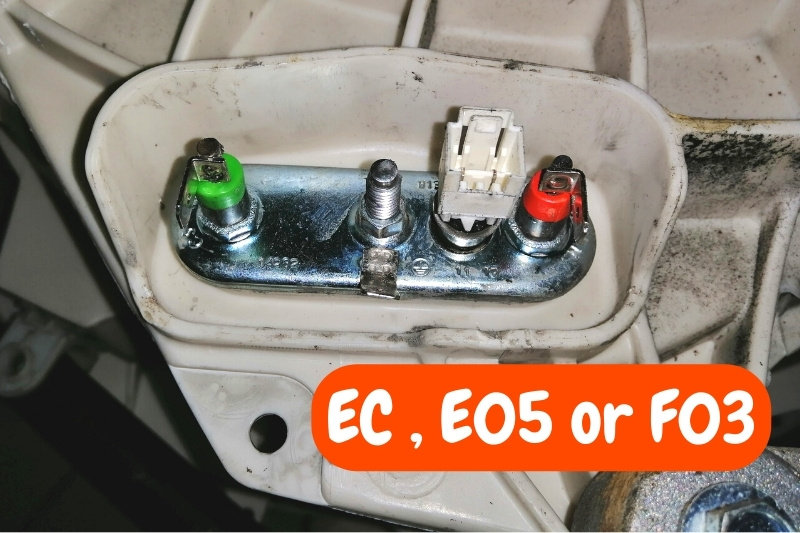
- Meaning: The temperature sensor, responsible for monitoring water temperature, is malfunctioning. This means that the appliance is unable to heat on wash or dry settings, resulting in an ineffective clean and dry.
- Troubleshooting: Turn your appliance off at the mains, wait one minute, and switch it back on. Try running a wash cycle and see if the issue is resolved. If not, contact a professional technician to diagnose and replace the faulty temperature sensor.
General Troubleshooting Tips for Washing Machines
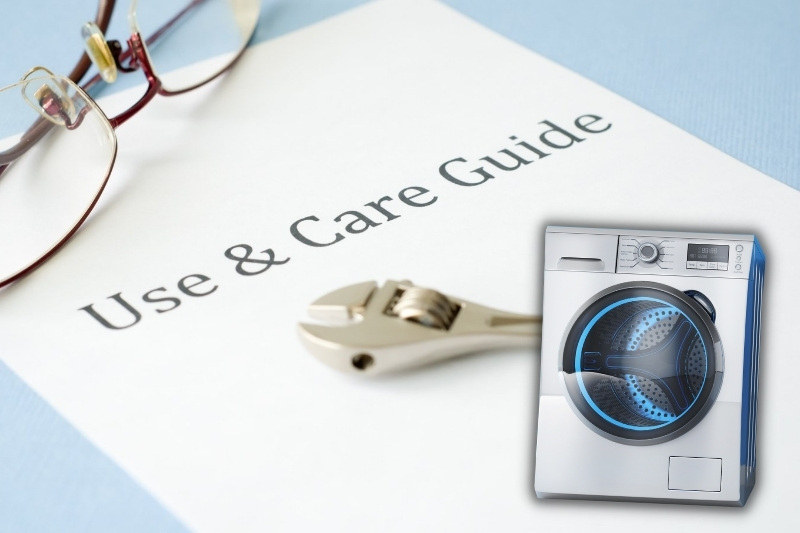
The issue-specific troubleshooting tips above are the best way to fix the problem with your washing machine. But if you’re still unsure, you can try the general guidance below to rectify the issue:
- Power reset: Many error codes can be resolved by simply resetting the washing machine. Turn off the power, unplug the machine, wait a few minutes, and then plug it back in. Restart the machine and see if the error code persists.
- Check for obstructions: Inspect hoses, filters, and drain pipes regularly for clogs or blockages. You should also regularly clean or remove any debris that may hinder the proper functioning of the machine, including cleaning the drum, drawer, and seal.
- Balance the load: Avoid underloading or overloading the washing machine. Ensuring a balanced load can prevent several error codes related to unbalanced loads or motor malfunctions. It will also help to extend the lifespan of your washer.
- Follow the manufacturer’s instructions: Always follow the washing machine user manual and adhere to the manufacturer’s guidelines for maintenance, detergents, and loading capacity. This help to keep your machine in top condition.
When to Seek Professional Assistance for Your Washing Machine
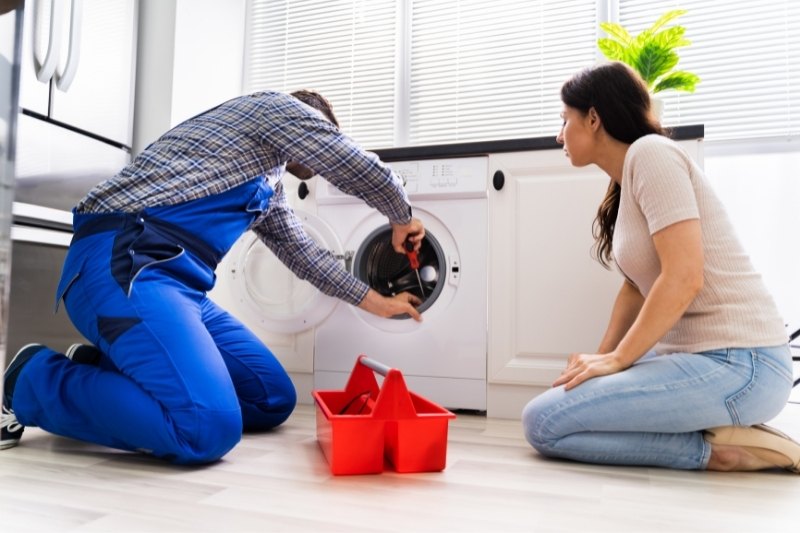
While some error codes can be quickly resolved through simple troubleshooting, certain issues may require professional attention. These include electrical faults, motor problems, complex electronic malfunctions, and cases where the warranty is still valid.
Attempting to fix these issues without proper expertise can lead to further damage or void the warranty.
In such situations, contacting a qualified service technician is the safest and most effective solution.
You should also consider calling a professional if you cannot seem to rectify the issue yourself—especially if the warranty is still valid. You can also reach out to the manufacturer for additional help.

Hannah has a passion for cleaning. She worked her way around Australia by cleaning hostels in exchange for free accommodation and used her cleaning skills to bag a job as a chalet host for a luxury ski company in France.






